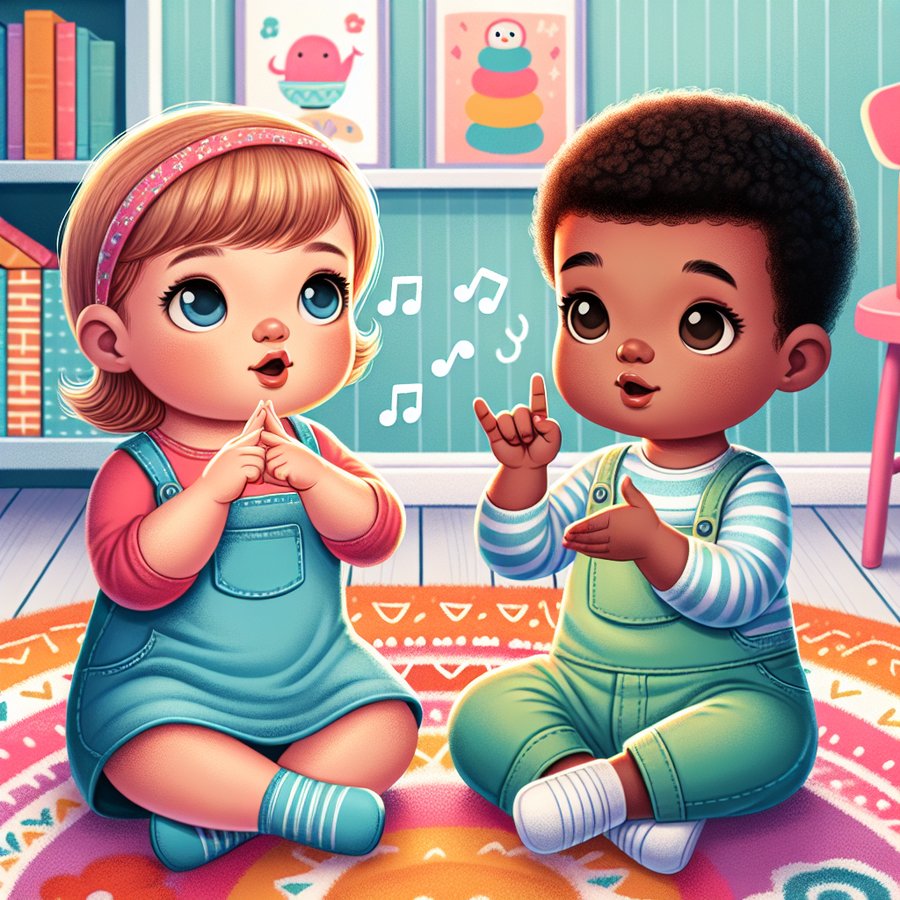Exploring the Baby sign language basics is akin to unlocking a secret door to your baby’s thoughts and needs, long before they can articulate words. It’s a journey my family embarked upon with my first child, and it transformed our understanding of each other in profound ways. Baby sign language offers a unique medium of communication during those months (or even years) where verbal communication is not yet possible. Let’s walk through this fascinating world together, discovering not just the how-to but also the incredible why behind baby sign language.
Why Should You Consider Baby Sign Language?
Imagine the scenario: your baby is fussing, and you’ve tried all the usual solutions. You’ve checked their diaper, attempted to feed them, tried to get them to nap, but nothing works. Then, your baby signs “milk,” and you realize they were just thirsty. This kind of clear communication is the gift of baby sign language. It bridges the gap between a baby’s early desires and their ability to express them, reducing frustration for both baby and parents.
Beyond easing communication, research suggests that babies who sign may develop verbal communication skills earlier than their non-signing peers. The practice encourages babies to be active participants in their own learning process, fostering a sense of independence and confidence. It’s a bonding experience, too, allowing parents and babies to connect on a deeper level.
What Are the Baby Sign Language Basics?
At its core, baby sign language is about simplicity and consistency. Start with basic signs that are relevant to your baby’s daily life. Common starter signs include “milk,” “more,” “all done,” and “sleep.” The key is to use the sign every time you say the word, helping your baby make the connection between the sign and its meaning. It’s fascinating to witness that moment of recognition when your baby first understands a sign.
My journey with baby sign language began with my son’s fascination with birds. Every time we saw a bird, I would point and sign “bird.” It wasn’t long before he started making the sign back to me, his tiny fingers clumsily trying to mimic my own. This was our first step into a broader world of communication, one that we built upon daily with new signs and lots of repetition.
How Can You Effectively Teach Your Baby Sign Language?
Patience and repetition are your best friends when it comes to teaching baby sign language. Always make the sign when you speak the word, and do so in a context that makes its meaning clear. For example, sign “milk” when you’re about to feed your baby. It may take time, but with consistency, your baby will start to sign back.
Another effective strategy is to focus on signs that meet your baby’s immediate needs or interests, as this will motivate them to learn. Engage with your baby during signing; make eye contact, and ensure they’re focused on you. Celebrate their successes, no matter how small, and remember that every baby learns at their own pace.
For those looking to dive deeper into this subject, incorporating resources like tips for introducing sign language to enhance baby communication can provide additional strategies and insights to enrich your baby sign language journey.
Which Signs Should You Start With?
Beginning with signs related to food, sleep, and comfort can make the learning process both relevant and rewarding for you and your baby. Consider signs like “eat,” “drink,” “sleep,” and “cuddle” as foundational. As your baby’s ability to sign grows, you can introduce more complex concepts related to their environment.
The beauty of baby sign language lies in its flexibility. You can tailor your choice of signs to fit your family’s specific needs and daily routines. This personalization makes the learning process more intuitive for your baby and more fun for you.
As we embark on this journey of early communication through baby sign language, it’s important to remember the goal isn’t perfection but connection. Whether it’s through promoting gross motor skill development in toddlers or navigating the strategies for dealing with separation anxiety in babies, the underlying theme is always about understanding and responding to our children’s needs in the most supportive ways possible. Baby sign language is another tool in our parenting toolkit, one that can lead to fewer tears and more joyful moments of connection.
For further exploration into related topics and to satisfy curiosities, consider exploring resources on building a reading routine for language and emotional development or the activities to promote empathy and social understanding in toddlers. Each of these areas complements the foundation set by baby sign language, contributing to a well-rounded approach to early childhood communication and development.













